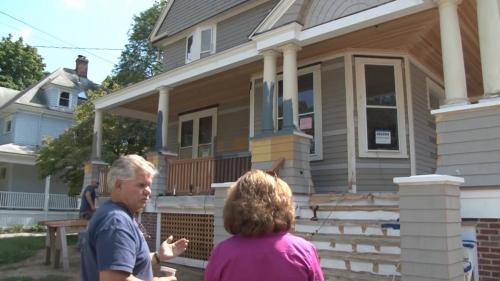Reno or Residence–Read These Pro Tips
 Compare the costs, time and headaches of rehabbing to buying a fully renovated home with the pros at “This Old House.”
Compare the costs, time and headaches of rehabbing to buying a fully renovated home with the pros at “This Old House.”
I think it’s safe to say that, at one time or other, you’ve driven by a house for sale that had the potential to be the home you’ve always dreamed of owning. Sure, it needed some serious TLC that would require a significant time investment on your part—but you justify that by thinking about the smaller mortgage you’ll need. A small project here, a little bigger project there and then you’ll be home free, so to speak, with low monthly payments, but a high-value house.
How hard can it be? If Ryan Gosling can renovate and restore that mansion in the movie, “The Notebook,” you should be able to fix up a four-bedroom house, right?
Not so fast. Consider these four tips from the television show, “This Old House,” to help you decide whether to buy a ‘fixer,’ or a ready-to-move-in home that’s been fully renovated.
- Calculate Your Risk
Figure out whether your project is worth the renovation. What do you plan to renovate and how much will that cost? This estimate should include labor, materials and how many projects you need to complete to make your house a dream home and not a money pit. Just to be on par with property values, add your renovation costs to your house purchase and make sure it’s not becoming the most expensive, but most undervalued, house in the neighborhood. - Is it a Project, or a Career?
Focus on paint, drywall patching and floor refinishing instead of adding a second story. Taking on a major renovation project while living in the home could ‘build’ frustration and tension while your life seems turned upside down. Even modernizing a kitchen and upgrading a master bathroom could be problematic, unless you plan well. When lighting is involved, install LEDs to save on electrical bills. Lighting alone can represent 25 to 35 percent of your monthly electrical demand. - Elbow Grease
Sweat-equity renovations, where the homeowner does most of the work, can cut a project’s cost significantly. Instead of hiring a contractor to, say, replace kitchen cabinets, or lay pavers for a patio, purchase a “how to” manual on how to do the project yourself. Do-It-Yourself projects eliminate contractors, labor and other expenses. This is a great opportunity to see who your real friends are by who lends a hand. Important questions to ask yourself are, ‘Do I have the time, skills and desire to really roll up my sleeves?’ And, ‘Would I really prefer to have all the work done before I move in so I could enjoy my new home immediately?’ - From Project to Perfect
For a DIYer with the commitment to see a renovation through, buying a fixer can be a nifty way to save money, build equity in a house and instill pride of ownership. There’s nothing like standing back and enjoying your own handiwork. Others, however, are perfectly content to kick back and enjoy the benefits of a professionally renovated home from the day they move in. Which are you?